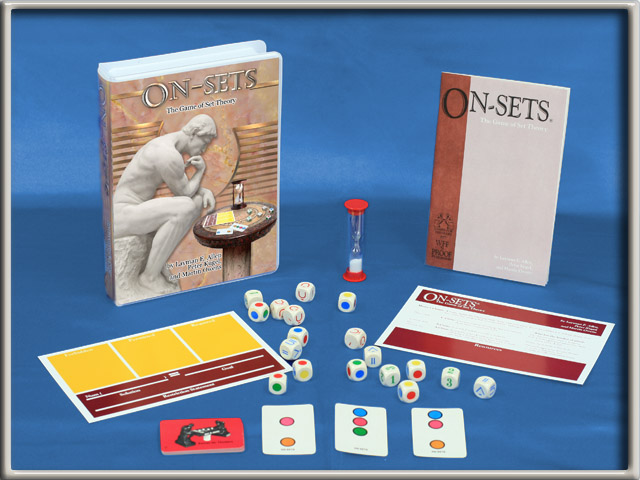We have now moved along to playing On-Sets (in addition to Equations and Presidents) during our practices.
Clague players will already know everything in this post, but just in case some parents or people interested in learning Academic Games are reading, here is a (very) simplified version of what On-Sets is about.
On-Sets is a game of set theory, and therefore a game of logic. The game consists of cards, cubes, a timer, a "flub", and a board.
Cards have between zero and four colored dots on them -- blue, red, green, or yellow. This means there are 16 (=2^4) cards in the set. Only some of them are dealt (face-up) and these become the "universe".
There are several types of cubes. Eight have colors on them. A yellow cube means the set of all cards which have a yellow dot on them -- and similarly for blue, red, and green. Seven of the other cubes mostly have set operators such as union, intersection, and complement. [If you're new to set theory, it might be helpful to see the Wikipedia Page on basic set theory]
The three remaining cubes have digits on them. One player -- the "goal-setter" -- uses these cubes to form a numeric goal. Players must then be prepared to write an expression using set theory where the number of cards in the universe described by their formula equals the goal that was set.
The rest of the game is similar to Equations -- as cubes are moved onto the various sections of the board it changes which cubes must (or must not) be used in solutions, and players look for opportunities to "challenge" the moves of their opponents.
There is a lot more to On-Sets -- particularly at the Adventurous level that the Clague team plays at. The complete rules and other documents about the game can be found at the Michigan Leagues of Academic Games website
